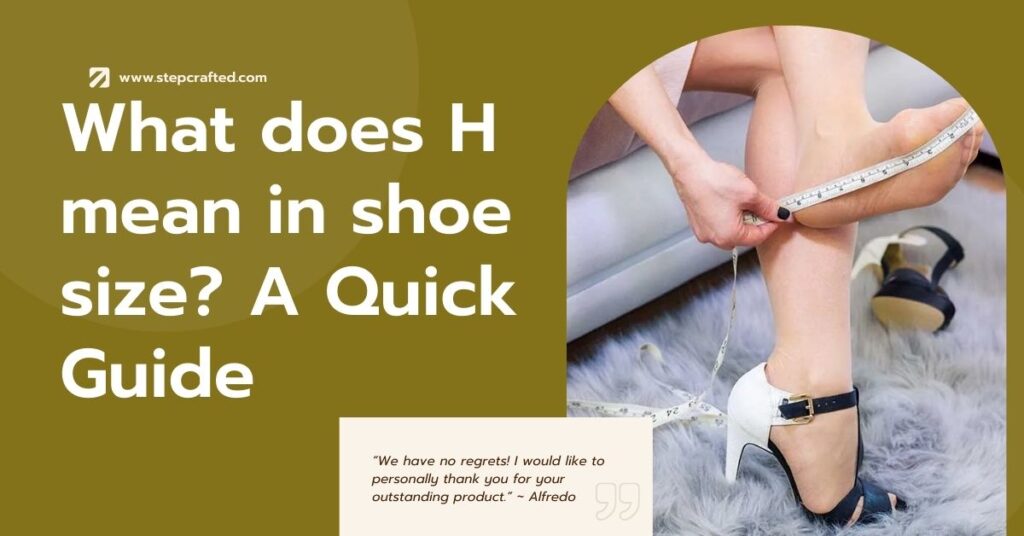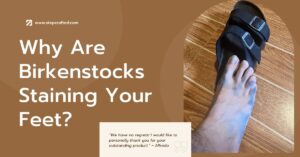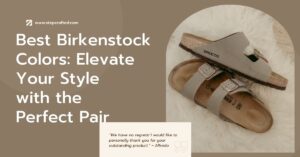Navigating the world of shoe fittings can often feel like a daunting task, especially for those of us with feet that don’t seem to fit the norm. Whether your feet are extra wide or super narrow, finding that perfect pair of dance shoes that fit comfortably is crucial.
Contents
ToggleAs a dancer myself, I’ve always known the importance of comfort and performance in a shoe. It’s not just about the design; it’s about how the shoe complements your foot’s width and sizes.
When you come across the term “What does H mean in shoe size”, it’s referring to a specific width designation used by shoe manufacturers to cater to those who need extra wide fittings. This width is essential for providing the necessary comfort and performance in dance or any activity that requires a lot of foot movement.
The manufacturers understand this need and offer an extensive range of sizes and widths, including ‘H’ fitting to ensure every individual can find their perfect match.
Shopping online or on the high street, you’ll notice not all shoes cater to ultra-narrow or extra wide feet, leading many to struggle in finding the right fit. This is where understanding the importance of ‘H’ fitting comes in. It’s a game-changer for those of us who have felt limited by the standard widths offered.
The comfort and fit of a shoe significantly affect its performance, making it essential to choose the right size and width based on your preference and feet’s needs. This extensive range of options provided by manufacturers ensures that everyone, regardless of their feet size, can enjoy the good design and comfort that comes with a well-fitted shoe.
What is ‘H’ in Shoe Size?
When discussing shoe fitting terminology, it’s crucial to understand that ‘H’ does not refer to a size but rather a width. In the realm of dance shoes and everyday footwear, ‘H’ stands out as a marker for those needing a wider fit. While a number typically denotes size, selecting a shoe comes with the additional choice of widths, ensuring a fit that accommodates the unique shape of one’s feet.
This width is essential for achieving the correct comfort and support, making it a key consideration in the selection of both regular and specialty footwear.
Is ‘H’ a Normal Size?
To address whether an ‘H’ fitting is normal, it’s important to note that it represents a wide option in the spectrum of shoe widths. This categorization implies that ‘H’ is broader than most, designed to meet the needs of individuals with feet that don’t conform to the central band of sizes and widths. While some shoe manufacturers offer a range of fittings, from very narrow to very wide, an ‘H’ width is considered less commonplace.
This is largely because producing an ‘H’ fitting for every size would be uneconomic, given that most people’s feet fall into a more standard range of widths.
How is ‘H’ Measured?
Measuring the ‘H’ width involves assessing the widest part of the foot with precision. The most accurate tool for this task is the Brannock device, a piece of equipment developed by Charles Brannock. This device not only gauges the foot’s length but also its width and arch, providing a comprehensive understanding of its dimensions.
Found in most good shoe shops, the Brannock has been the gold standard for measuring feet for nearly a century. With this tool, an experienced shoe fitter can tell you your exact size and width, ensuring you select shoes that offer the best possible fit and comfort for your feet.
EE vs H width
Understanding shoe sizes and widths can be a complex journey, especially when terms like EEEE and H width come into play. For those navigating this landscape, it’s essential to recognize that H width is often considered the same as EEEE in some circles, meaning it signifies a wider fit.
This variation isn’t standardized across the industry or even within a single brand, leading to a fair amount of confusion for consumers.
From personal experience, wearing a 9.5H has taught me the invaluable advice of utilizing a boot stretcher to ensure the last is wide enough for my foot. By stretching the leather upper, a more comfortable fit can be achieved.
This trick, discovered over decades of trial and error, underscores the lack of common sense in shoe sizing terminology used by some companies. It’s unbelievable that despite the advancements in the industry, finding a straightforward method to describe wide and medium (M) widths remains a challenge.
Interestingly, some brands use terms like 9H-M to indicate a 9.5 medium width, a notation that seems to lack common sense. It’s a quirky aspect of the shoe industry that underscores the need for greater standardization and clarity.
Whether it’s through learning the hard way or sharing advice among fellow shoe enthusiasts, understanding these nuances can make all the difference in finding that perfectly comfortable and well-fitting shoe.
SIZE GUIDE

Shoe Width Explained
- When it comes to finding the right shoes, the width of the shoe is equally important as the size. Most feet will fit into a standard fit, but for those with narrower or wider feet, understanding the nuances of shoe width is essential.
- Product descriptions often include width indicators such as “Fit: G” or “Fit: H”. These labels provide insight into the wider fitting shoe options available, with “Fit: H” indicating a shoe designed for even wider feet, offering more room and comfort.
- The symbols used to represent shoe widths can vary between European brands and UK brands, each with its system for categorizing the width of a shoe. From C, denoting narrow foot options suitable for slender feet, to EEE, which signals an extra wide fit, these classifications ensure a more personalized fit for every individual.
- For those navigating the European sized shoes, F represents the standard fit, while G stands for a slightly wider option, giving additional space for the ball of foot and toes. H, however, offers an even wider option, enhancing comfort through more generous width and wider tread depth.
- If you’re unsure about the most appropriate shoe width for your feet, the best approach is to seek advice and guidelines for finding the best fit. Visiting a store with a knowledgeable and friendly team can provide personalized assistance to ensure your shoes not only fit well but provide the support and comfort your feet need.
By emphasizing these key points, individuals can better understand the significance of shoe width in achieving the perfect fit, ensuring both comfort and support for all types of feet.
Measuring Your Foot
To accurately measure the length of your foot, start by placing a ruler on the ground and align your heel at the end of it. Stretch the ruler to your big toe and note the measurement. This number, when cross-referenced with a size chart, will help you calculate your size. Ensuring you have the correct length is the first step towards a comfortable shoe fit.
Foot Width
Boots and shoes come in various widths, ranging from B (for extra narrow) through C (narrow), D (regular), E (wide), EE (extra wide), to EEE (triple wide). To find your perfect width, measure the width of your foot at its widest part. Use this measurement in conjunction with the size chart to determine the corresponding width for your shoe size.
Women’s Sizing
For women who prefer the look and styling of men’s boots, a simple conversion can be applied. To determine your men’s size, simply subtract 1.5 sizes from your current ladies shoe size. This adjustment ensures that women can enjoy the style of men’s boots with the right fit.
Tips
For a more accurate measurement, position your heel against a flat surface like a wall. Measure from the wall to the tip of your big toe. Alternatively, having someone trace your foot onto a sheet of paper can simplify the process and yield more accurate measurements.
If you’re having trouble measuring your own feet, consider visiting a local shoe store to use a professional foot measuring device, known as a Brannock. For those between sizes, it’s generally recommended to order a 1/2 size up to ensure a comfortable fit.
By following these guidelines, you can navigate the complexities of shoe sizing, ensuring your next pair is both stylish and supremely comfortable. Whether you’re deciphering the meaning of H width in men’s sizes or converting men’s sizes for women’s wear, understanding how to measure your foot and choose the correct width is key to finding your best fit.
Dance Shoes: Ensuring the Perfect Fit Guide
Unlike ordinary shoes, dance shoes are crafted for performance, playing a crucial role in everything from lessons to competition. They undergo a lot of work, making a comfortable fit not just a luxury but an essential component for every dancer. Many dancers find a make and style that perfectly suits their feet and tend to stick with it, understanding the importance of consistency in their gear.
For those with unusually broad feet or feet of different sizes, a made to measure option might be the best route. Bespoke fitting offers a solution to unique foot shapes, ensuring that both shoes fit as if they were part of your feet. This tailored approach helps avoid the discomfort that comes from standard-width shoes that could become too tight, especially when feet become hot and swollen from extensive practice.
A common mistake is opting for an overly wide fit when purchasing a new pair of shoes, thinking it will account for the swell. However, dance shoes are designed to stretch over time. Starting too loose can lead to insecure footing—a dancer’s nightmare.
Good dance shoe manufacturers often offer half sizes and a variety of designs to combat issues with shoes feeling too narrow without the need to go up a size. This nuanced approach allows dancers to find a balance between snug and too tight, ensuring mobility without sacrificing security.
In summary, understanding how dance shoes should fit can transform your dancing experience. It’s not just about the length of the shoe but also the width and how it conforms to your foot’s natural shape.
For those navigating the complexities of dance shoe sizing, remember that performance, comfort, and a secure fit are paramount. Exploring half sizes, bespoke options, and staying true to a style that suits you can make all the difference in your dance journey.
Solutions for Slightly Wider Shoes
Discovering that your dance shoes are too tight and restrictive can be a common issue, especially right after purchase. This tightness not only hampers your ability to move freely but also detracts from the overall comfort of wearing the shoes. It’s crucial, then, to find a solution that can provide that essential fraction of width you need without compromising the shoe’s integrity.
There are techniques to gently stretch a pair of dance shoes to achieve a slightly wider fit. However, this process should ideally be left to professional shoemakers. The reason being, even the slightest bit of stretching, if done incorrectly, could potentially ruin your expensive shoes.
These professionals have the skills and tools to perform the stretching in a way that adds comfort without damaging the shoe.

When looking for a solution to tight dance shoes, it’s advisable to buy shoes that are made explicitly for dancing. Such shoes are designed with the understanding that wearing and moving in them will inevitably lead to some degree of stretching.
Opting for dance-specific footwear from the outset can save you from the hassle and risk of trying to manually adjust the width of your shoes later on. This preemptive approach ensures your dance shoes offer both the comfort and flexibility you need to perform at your best.
Conclusion
For those with wide feet, finding the right shoe that balances comfort and fit is crucial, especially in the world of dance. It’s essential to partner with a dance shoe manufacturer that not only offers half-sizes and wide fittings like ‘H’, but also provides a made-to-measure service. This ensures that each dancer can find footwear that fits snugly yet securely, accommodating the unique shape of their foot without sacrificing comfort.
Navigating this selection process is akin to walking a fine line; the goal is to secure a shoe that remains securely on the foot during the most intricate dance maneuvers, yet wide enough to retain comfort as feet heat up during a performance.
The ‘H’ width fitting in dance shoes is a testament to this balance, offering the extra space needed for those with wide feet to move freely and confidently across the dance floor
FAQ
What does H mean in shoe size?
In shoe sizing terminology, ‘H’ denotes an extra wide fitting. This categorization is broader than ‘G’, which represents a wide fitting, and ‘F’, known as the standard fitting. The ‘H’ size is specifically designed to accommodate feet that require more room than what is offered by the usual wide and standard options, ensuring both comfort and a proper fit for individuals with wider feet.
What does size 7 H mean?
On product pages, the letter ‘H‘ signifies half sizes. For instance, 7H is equal to a US 7.5, indicating that the shoe provides a fit between the standard whole sizes, offering a more precise and comfortable fit for those who find themselves between sizes.
What is size H width?
Shoe Size and Width Chart
| Size | F (Slim) | H (XL) – Comfort Width |
|---|---|---|
| 35 | 21.2 cm | 22.2 cm |
| 36 | 21.6 cm | 22.6 cm |
| 37 | 22.0 cm | 23.0 cm |
What does H mean in shoe size Madewell?
In Madewell’s sizing system, “H” represents a half size, offering a precise fit for those who fall between standard sizes. When you select a size with an “H”, you’re choosing a shoe that’s designed to give you that perfect midpoint in fit, especially noted in features like a 3/4″ heel.
Madewell ensures comfort and quality through the use of premium leather for the upper and lining of their shoes, enhancing the overall wear experience.
What is a size D shoe?
In American shoe sizing, the letter signifies the width of the shoe. Size D, or D(M), is considered the standard or medium width. It falls between C, which is narrow, and sizes like E, EE (also known as 2E), and EEE (or 3E), which are categorized as extra wide sizes.
If you find that off-the-shelf shoes in size 44.5 generally fit you well, then a corresponding US size in D(M) would be your best choice for a comfortable and accurate fit.





